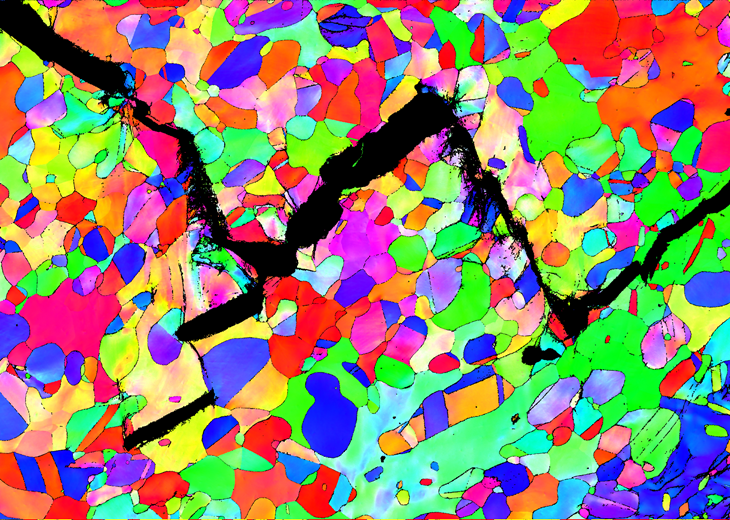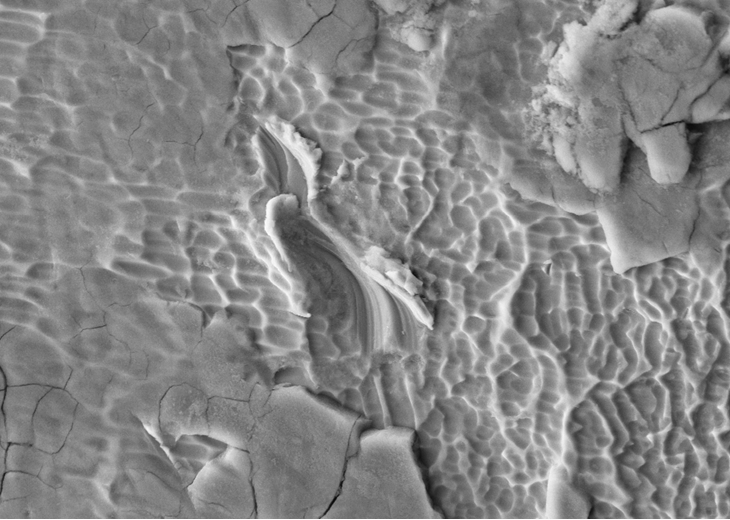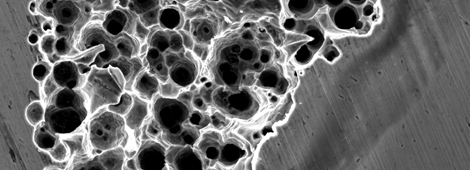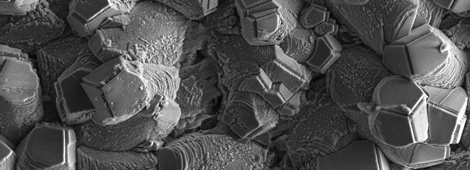Mechanically Assisted Corrosion

Overview
Mechanically assisted corrosion (MAC) encompasses the most dangerous forms of corrosion, often leading to catastrophic failures. They occur due to a combination of mechanical factors (e.g. applied and/or residual stresses, cyclic loading, wear) and electrochemical corrosion. The most common types of mechanically assisted corrosion are stress corrosion cracking (SCC), erosion- and abrasion-corrosion (tribocorrosion), cavitation corrosion, and corrosion fatigue.
Although the different forms of hydrogen embrittlement do not require localized corrosion, hydrogen stress cracking (HSC), sulfide stress cracking (SSC), hydrogen induced stress cracking (HISC), hydrogen-induced cracking, etc can be grouped as particular forms of mechanically assisted corrosion.
SCC, corrosion fatigue, and the various forms of hydrogen embrittlement are, likewise, categorized as environmentally assisted cracking (EAC), a sub-category of mechanically assisted corrosion.
Environmentally assisted cracking
EAC is defined as the cracking of a material under the combined effects of stresses (applied or residual) and a corrosive environment (can be a solution or gas). If the stress is static, EAC is classified as SCC, HSC, SSC, or HISC, whereas for cyclically applied stresses the phenomenon is called corrosion fatigue.
EAC can affect virtually all human activities, and it has been described as the most costly form of corrosion. For EAC to occur three causative factors must concur:
- A tensile stress (applied or residual) above a certain threshold,
- A susceptible material or microstructure,
- A specific environmental exposure (e.g., an H-bearing environment)
Stress corrosion cracking
SCC is a type of EAC where gradual crack propagation occurs within the microstructure of a material under the simultaneous action of static tensile stress (applied or residual) and corrosion. The cracks may propagate along or through the grain boundaries classified as intergranular and transgranular crack growth, respectively.
Most metals that suffer SCC often exhibit excellent resistant to uniform corrosion. As a result, the majority of the exposed surface remains unattacked during SCC. Small cracks, however, can propagate undetected into the material, significantly reducing the load-bearing capability of the material and lead to a catastrophic failure.
Corrosion Fatigue
Corrosion fatigue is a form of EAC where a combination of cyclic loading and a corrosive environment leads to fast crack propagation and subsequent fracture of an engineering alloy. Corrosion fatigue bears many similarities with SCC, although it has often been associated with transgranular fracture. Corrosion fatigue fracture surfaces show the typical striations caused by intermittent crack propagation.
This type of failure has been encountered in bridges, offshore platforms, machinery exposed to vibrations and also stainless steel and titanium implant materials exposed to human body fluids.
Hydrogen embrittlement
Hydrogen embrittlement refers to toughness-loss caused by the presence of hydrogen within a metal or alloy. Hydrogen embrittlement resistance often decreases with an increase in alloy strength.
The different forms of hydrogen embrittlement, e.g., HSC, HIC, SSC, and HISC, are due to the diffusion of a small concentration of atomic hydrogen into the metal or alloy microstructure.
The atomic hydrogen can originate from the fabrication process, welding operations, the containment and storage of hydrogen gas, cathodic protection and also may form as a by-product of corrosion reactions.
HSC, HISC, and SSC, for example, can occur in the absence of localized corrosion, which makes them the most dangerous forms of corrosion.

Tribocorrosion
Tribocorrosion is the science of conjoint action of mechanical wear (abrasive or erosive) and electrochemical corrosion. Interaction between mechanical damage (wear) and electrochemical degradation (corrosion) is a complex phenomenon. In a general form, synergism between abrasion and corrosion, S, can be expressed by
$$S = S = S_{wc}+S_{cw}$$
where Swc; represents wear-affected corrosion and Scw;corrosion-affected wear. The material loss due to any of these terms can be reported as volume (ΔV) or mass change (Δm).
Tribocorrosion is usually divided into two distinct categories:
Erosion-corrosion
During erosion-corrosion particles strike the surface in a flowing solution. Studies revealed that the following critical mechanical factors that determine the severity and rate of erosion-corrosion are
- impact angle,
- the kinetic energy of the particles (affected by particle size, density and impact velocity), and
- particle’s hardness, shape and shattering strength.
Abrasion-corrosion
Abrasion corrosion is further divided into two contact types:
a) two-body; where two solid bodies slide against each other (reciprocating or continuous sliding; in case of small amplitude high frequency it is called fretting corrosion).
b) three-body; where abrasive particles are trapped between two surfaces in relative motion.
In both cases, the surfaces are loaded, and the movement occurs in a corrosive environment.
The perceptible corrosion resistance of corrosion resistant alloys (e.g., stainless steels), is obtained by the spontaneous formation of a stable and compact passive oxide film on their surface. However, tribocorrosive conditions disturb the integrity of the passive film, leading to an accelerated dissolution.
Multiphase wear resistant alloys (high-chromium white cast iron) and metal matrix composites are commonly used in applications where corrosion and abrasion occur concurrently. At this stage, no standard methodology exists to predict/quantity their tribocorrosive behaviour. Hence multiphase wear resistant alloys are generally assessed solely based on their corrosion-only and wear-only characteristics.
Triboelectrochemical methods are commonly adopted to understand the interactions that lead to passive film disruption:
- Rapid scratch tests to evaluate film removal and repassivation
- Dynamic tests to understand removal and repassivation under a continuously occurring tribocorrosive condition.
MAC research at Curtin
The study and evaluation of MAC and their associated failure modes, as described above, require a multidisciplinary approach that includes Materials Science, Electrochemistry, and Mechanics as all three factors, i.e., the material, the environment and the applied and or residual stresses can greatly affect the component’s performance under certain conditions.
At the Curtin Corrosion Centre, we have experts in the fields of tribocorrosion and EAC as well as a wide range of testing methods to evaluate and compare materials under different metallurgical and environmental conditions, allowing us to investigate mechanically assisted corrosion holistically.



